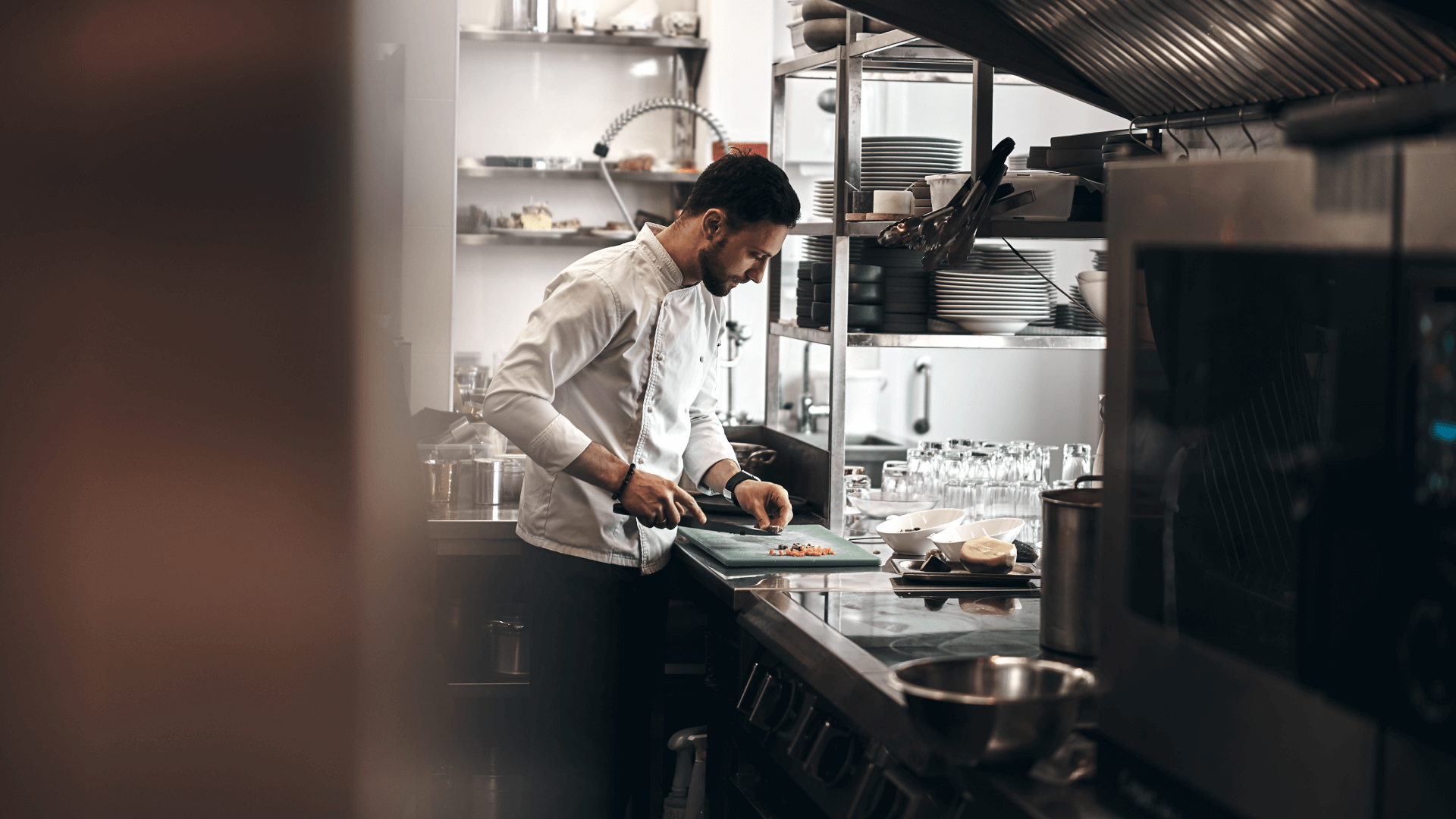The popularity of home cooking has reached new heights in recent years, and experimenting with sourdough, smoking, and unusual cuisines has become common amongst amateur chefs. But the fun and creative side of food is just the tip of the iceberg, and the daily reality of cooking professionally can be quite different.
The fun and creative side of food is just the tip of the iceberg. – Caitlin Kennedy
Popular shows such as The Menu and The Bear have brought cheffing culture into the public eye in a new way. They both highlight how the polished experience offered to guests in a restaurant often doesn’t reflect what’s going on behind the kitchen doors. Despite their focus on the darker side of the industry, there is still a fair amount of glamour and romanticism associated with cooking professionally.
So, what is happening behind the scenes? I asked some fellow local chefs about their daily routines, and gained some interesting insights.
A run through of an average day
A chef’s day is divided into “prep” and “service”, two (hopefully) very distinct categories. The prep part of the day involves doing as much mise en place (setting up) as possible so that service, which has a much faster pace, runs smoothly. Running out of prep during service is most chef’s worst nightmare, and to be avoided at all costs. The most likely cost is working extremely long hours.
Running out of prep during service is most chef’s worst nightmare. – Caitlin
When I asked chefs about their working hours, I got responses of anywhere between 9 and 16-hour days, with all-time lows clocking in at 19-hour shifts. And these aren’t just passing-the-time hours – these are action packed, stress-filled hours on your feet, fuelled by the urgency of ensuring you’re going to be ready for the next service. Because of this, chefs often eat standing up.
Each minute is precious and can’t be wasted on luxuries like sitting down. – Caitlin
The rare quieter times are for admin: writing prep lists and placing orders. And then there’s the cleaning. Each day ends with a rigorous cleaning session – often the last thing anyone feels like doing after a long day when the adrenalin of service has been depleted, but it’s an integral part of the job nonetheless.
What is the hardest part about the job?
Besides the physical demands of long hours on their feet, our chefs cited missing social events, working when friends and family are off, and the pressure and intensity of each working day as the toughest aspects of the job. Others found that the paperwork was the biggest drain. For a few, interactions with guests and diners was a challenge – it’s a strange contrast moving from the private, loud and sometimes frantic world of the kitchen, to the quiet and public world of the front-of-house.
Missing social events, working when friends and family are off, and the pressure and intensity of each working day as the toughest aspects of the job. – Caitlin
So, what makes it worth it?
Most chefs said the people. The intensity of a kitchen often results in a close-knit, banterous team, and a feeling of solidarity with your companions as you work towards a unified goal. The satisfaction of creating and successfully executing an amazing experience for guests, and receiving positive feedback for it, was another common thread.
Given the pro’s and con’s, are industry salaries fair?
The chefs were all in agreement here: in fine dining restaurants, and especially for the more junior staff members, absolutely not. But there was also an understanding of why this is the case. Restaurant economics, especially in South Africa, are such that in order for menu prices to be affordable, wages are kept low, especially for the less skilled employees. Starting out at a prestigious restaurant is generally not financially rewarding, but the experience and connections are invaluable.
Most chefs felt that those tough early days were worth it for the skills they developed in the process. – Caitlin
When the long days are done, what are chefs cooking when they get home?
The ability to cook exactly what you feel like eating and satisfy any craving with ease was one of the common responses to why chefs love their jobs. Chefs are first and foremost lovers of eating, and being surrounded by incredible ingredients, with the skillset to turn them into any delicious dish you’re craving is a major perk.
Chefs are first and foremost lovers of eating, and having the skillset to turn ingredients into any delicious dish is a major perk. – Caitlin
Favourite ingredients include onion, garlic, lemon, and (good quality) salt. Another chef favourite is fat – and for good reason! Fat is the major flavour carrier in food and, in reality, can be very healthy despite its unfortunate reputation in diet culture. Beloved dishes to cook at home included beef short rib lasagne, anything in a wok, and generally lots of hearty comfort food.
Favourite ingredients include onion, garlic, lemon, good quality salt, and fat. – Caitlin
It was really refreshing to hear that despite the hardships, many veteran chefs were still completely enamoured with the industry, and totally content with their chosen career paths. While in general, they wished the public knew just how much effort goes into a plate of food at restaurant level, they were more than willing to put in the hours. So next time you’re eating out, remember to give your chefs some love and show your appreciation for their hard work.



0 Comments